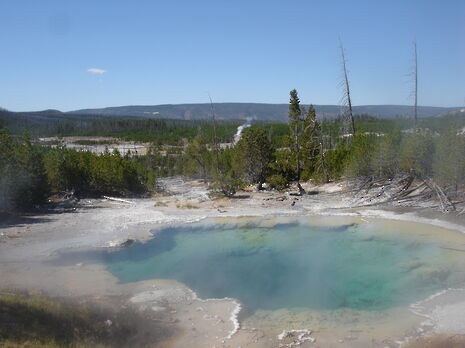The origins of life are becoming ever clearer
Jon Wall’s favourite breakthrough of the year provides strong new evidence for theories about the origins of life

The concept of a common ancestor is familiar to many since it became a hallmark of Darwin’s theory of evolution. What is more interesting, however, is the original common ancestor, the ancient organism from which all life descended.
A study published in July this year was the first to identify several important features of this ‘Last Universal Common Ancestor’, or LUCA. The researchers studied the genetic material of around 2,000 modern microbes and found that there were 355 genes common to the vast majority of these microorganisms. This suggests that these genes were found in LUCA many millions of years ago.
Characteristics of LUCA have been identified from analysis of its assumed genetic material (in much the same way that we could ascertain aspects of human physiology from our DNA). It seems that LUCA lived in volcanic environments, with hydrogen, carbon dioxide and iron in plentiful supply. The reason that this discovery is particularly significant is that it provides a lot of support for the idea that life first originated in volcanic vents on the sea bed.
This theory suggests that the first behaviours which could be called alive were metabolic: in other words, that the processes by which an organism sustains itself were the fundamental components of life. This comes in contrast to the main opposing theory, which suggests that replication (of genetic material) and hence reproduction were the first features of life to arise.
However, there still exist clear difficulties for each theory. The metabolism-first theory struggles to explain how genetic material like RNA (which is used in making proteins, as well as in gene replication) originally formed: enzymes are needed to construct these molecules, and this is not possible with high amounts of water present. The idea of vents deep under the sea as the cradle of life is clearly incompatible with this. At the same time, the argument that replication came first suffers from the inability of researchers to create self-replicating RNA, without which the propagation of life is impossible.
Despite this, in recent years the two theories have drawn closer together, with a separate team of researchers finding that it is possible to create an entire cell, based on the idea of lipids (fats and oils) forming blobs in water, in which RNA can be contained. The conditions for the chemistry behind RNA replicating within these cells, however, is dependent on ultraviolet light, meaning that while the fatty layer could shield any enzymes from water, the depth of these vents is still a problem. The most commonly proposed solution is that life could have begun in volcanic ponds such as those found in Yellowstone National Park in the USA, or alternatively in meteor impact craters which would also contain the requisite mix of chemicals.
Regardless of the problems to be overcome, we have never been closer to understanding how life on Earth started.
 News / CUP announces funding scheme for under-represented academics19 December 2025
News / CUP announces funding scheme for under-represented academics19 December 2025 News / Cambridge welcomes UK rejoining the Erasmus scheme20 December 2025
News / Cambridge welcomes UK rejoining the Erasmus scheme20 December 2025 News / SU reluctantly registers controversial women’s soc18 December 2025
News / SU reluctantly registers controversial women’s soc18 December 2025 Film & TV / Timothée Chalamet and the era-fication of film marketing21 December 2025
Film & TV / Timothée Chalamet and the era-fication of film marketing21 December 2025 News / News in Brief: humanoid chatbots, holiday specials, and harmonious scholarships21 December 2025
News / News in Brief: humanoid chatbots, holiday specials, and harmonious scholarships21 December 2025








